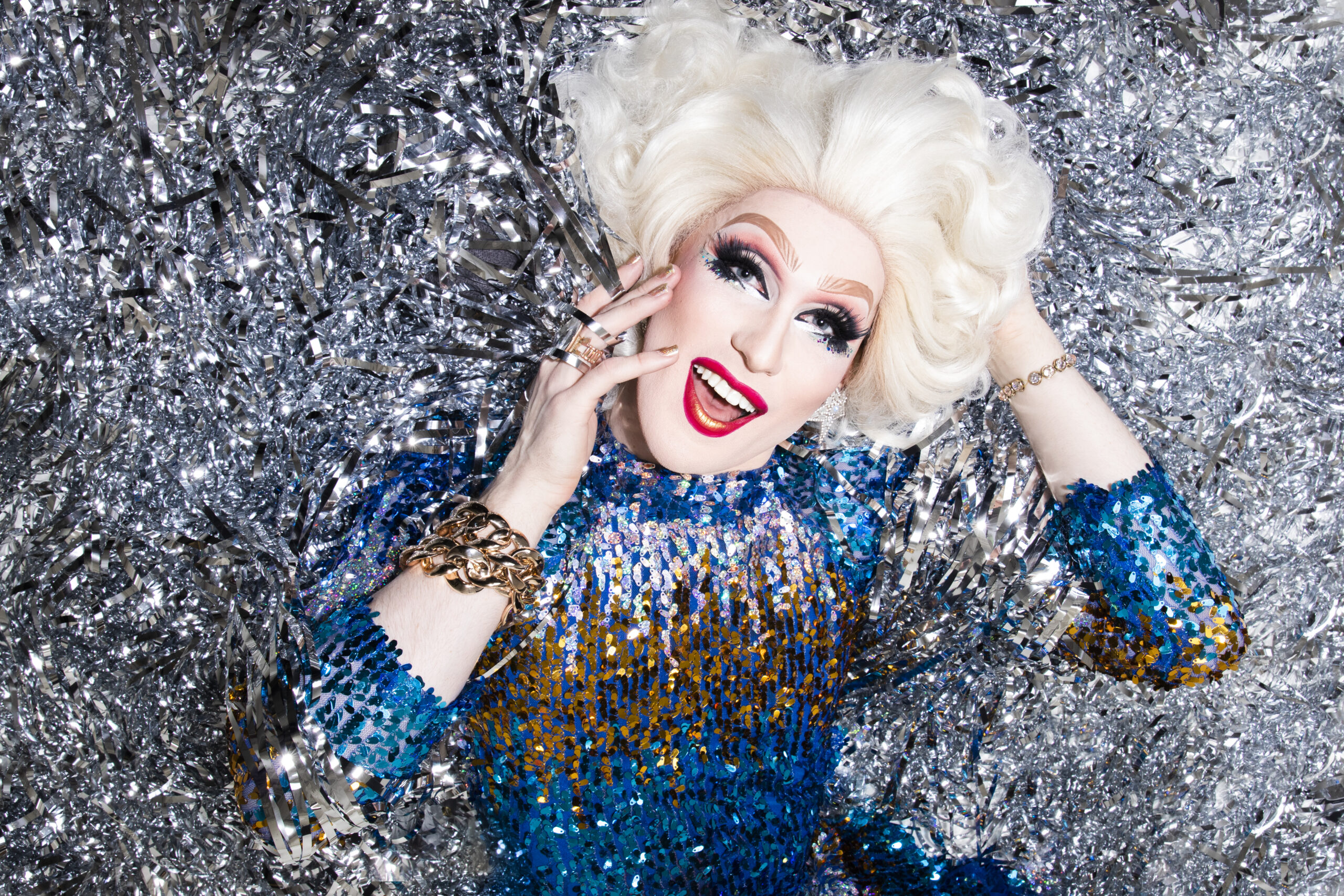From high school musicals in Akureyri to Tokyo bar shows and beyond, Gógó Starr has become a beacon of Icelandic drag. With a career steeped in flamboyant performances, community-building, and unapologetic queerness, Gógó reflects on the journey that brought her to center stage and the legacy she’s shaping in Iceland’s vibrant drag scene.
Through candid storytelling, she reveals how drag transformed from a personal exploration of femininity to a political act of defiance and a celebration of queerness. From her roots in Iceland’s small-town theater to becoming a global sensation, Gógó shines brightly, proving that the art of drag is as powerful as it is fabulous.
GayIceland’s reporter Magdalena Lukasiak sat down with Gógó and started by asking how her journey into drag began.
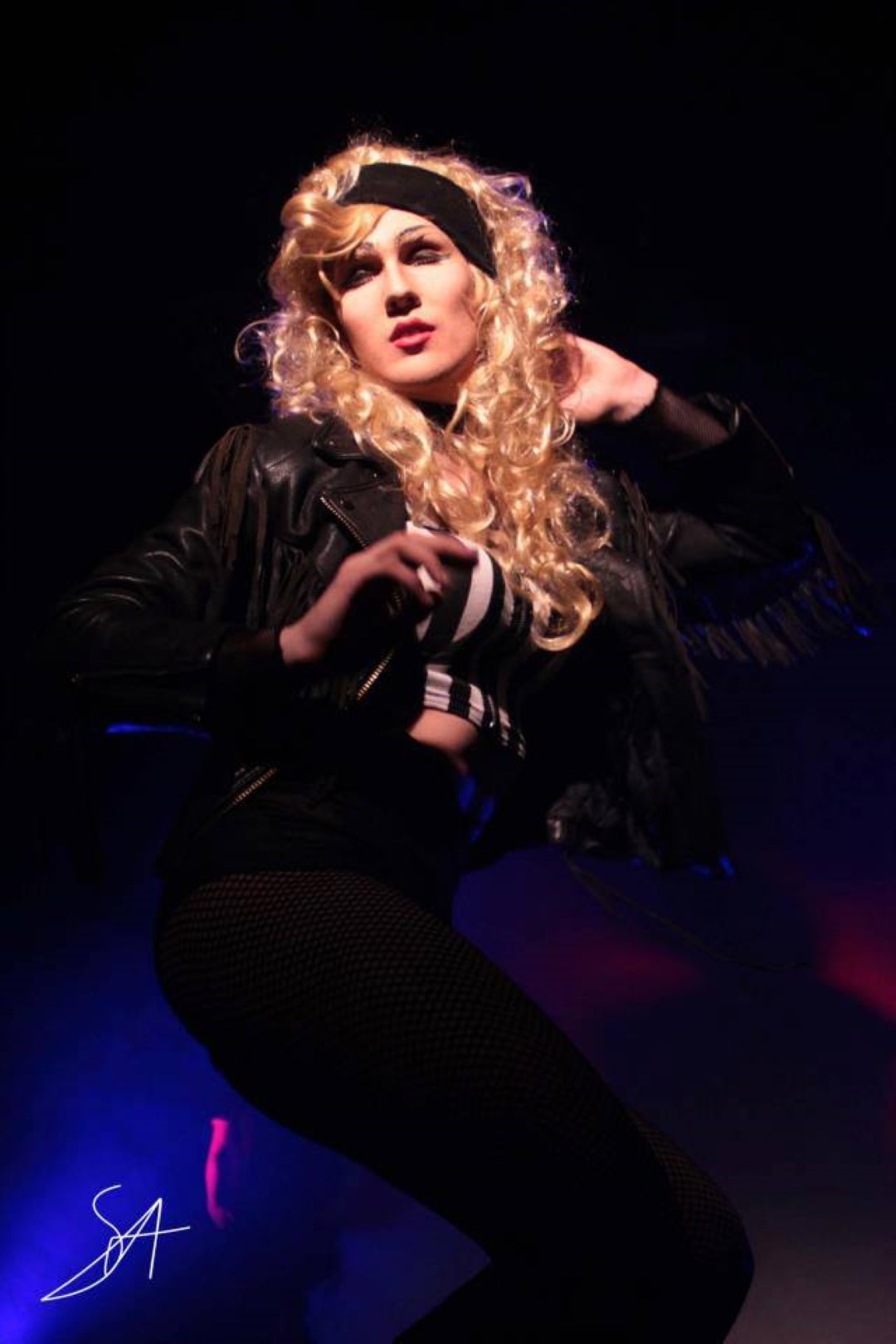
“I never thought about starting a proper career in drag, until it just happened – I didn’t even know that it was an option for me,” Gógó replies, adding that she always had a love for theater, performing, dressing up, cool costumes and general flamboyancy.
“As a kid I loved dressing up whenever possible, and I remember dressing up as a girl a few times for Öskudagur – Gógó has always been there, bubbling under the surface.”
I never thought about starting a proper career in drag, until it just happened.
Gógó’s first big step into drag was when she was 15 and participated in a musical in her high school theater club, where she played a very flashy and colorful character – essentially a drag role.
“I credit that experience with being the first time I remember feeling truly appreciated and celebrated for my feminine side, which I now realize is most of my identity. This started me on a journey of exploring my queerness, femininity, gender expression and identity – a journey I’m still on today. I think this feeling was the first time I felt like I was unapologetically myself, and could do so safely and confidently and was celebrated for it.
My baby steps in drag were taken in Hinsegin norðurland’s ‘Queen of the North’ drag pageant that me and a bunch of my queer peers in Akureyri created and produced yearly back in 2010-2014. There my drag persona was born, competed, lost, competed again, lost again, competed a third time and I finally won as Gógó, and then I hosted and organized the following years.”
When asked who taught her and what were her key influences Gógó frankly admits that during those years she was all over the place.
“But I would say that a couple of big influences at the time were the Christina Aguilera and Cher ‘Burlesque’ movie and of course Lady Gaga and her music videos. Even though RuPaul’s Drag Race started in 2009, I didn’t start watching it until around 2013 and became hooked ever since, and long to be a part of the franchise some day. But I consider myself a part of the last generation of drag performers who started before the influence of Drag Race. I remember when I was starting out, we called moving your lips to the music “miming”, but Drag Race has popularized the term “lip-syncing”, so now people think you’re going to be a french mime in a striped shirt if you mention miming. I’m so old.”
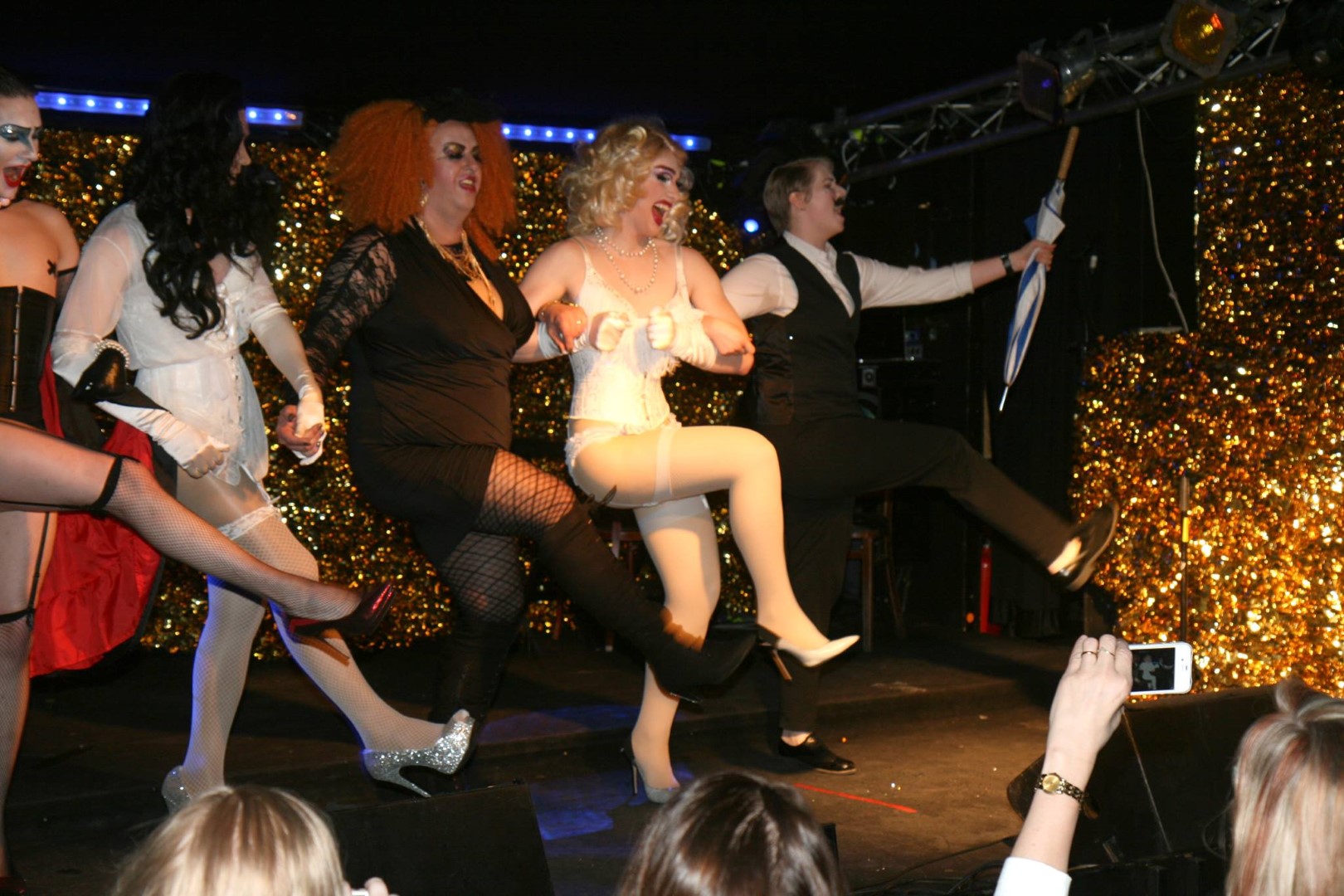
Gógó adds that she never really had a drag mother. “And if anybody says otherwise they’re a lying cunt!”
There was no one explicitly helping her out or teach her how to do drag, Gógó tells us. She had to figure out most of it myself.
“However, that doesn’t mean I did it all on my own – I’ve had a few amazing people supporting, teaching and uplifting me throughout the years that I’d love to shine some light on; Jenny Purr, Pixy Strike, Jono Duffy and Margrét Maack.”
Drag is just so fierce, fun and fabulous and freeing. But drag is also an inherently political act, challenging the status quo and giving the middle finger to gender roles, the gender binary and is probably the most visual spectacle of queerness in mainstream society.
Gógó has had a few amazing people supporting, teaching and uplifting her throughout the years:
|
Today Gógó has not only become a household name onn the Icelandic drag scene but an inspiration for many young artists as well.
“I just gave birth to my sixth drag child; my latest drag daughter Slaysha Vu Starr,” she proudly says. “She’s a trained dancer with dreams of super stardom and a silly sense of humor. We wanted to do a “birthing” act, where she is born to perform on stage, similarly to what I did with another drag daughter; Deff Starr. Slaysha absolutely slayed her first two numbers as a newborn drag baby – hanging upside down from the ceiling while lip-syncing to Ke$ha – I’m so proud.
It’s a joy to see young queer artists with a passion for drag being able to come out and play with this wonderful, expressive, personal and political artform – in this local scene that we’ve built together over the last decade or so.”
GayIceland: What do you appreciate about Iceland’s drag scene and what do you feel is missing?
“I love how diverse the local scene is. In many scenes internationally you can see that there’s a sense of performers trying to conform to a certain standard, usually inspired by a legendary performer from that area, which can end up feeling a bit monotonous. But what I love to see is performers finding their own voice, doing their own take on things and surprising the audience.”
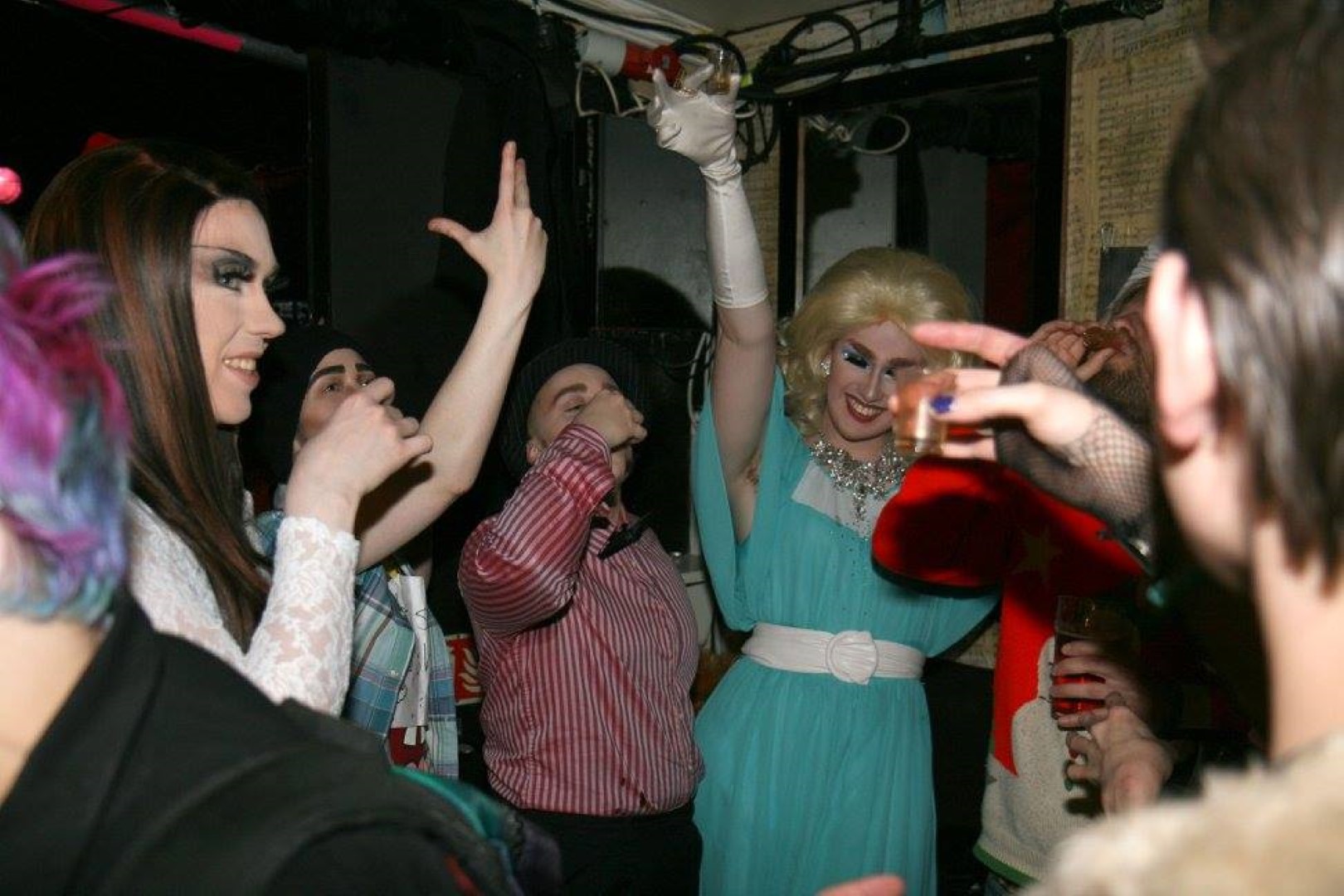
Reflecting on the question Gógó says she thinks that there’s still plenty of room in the Icelandic drag scene.
“There’s barely anything happening outside the capital area. We have space for more solo drag shows as well as scripted theatrical drag projects, like ‘Memoirs of a Valkyrie’ and the House of Heart’s ‘A Drag Saga’. I love to see drag brunches pop up every now and then, as well as family-friendly shows and children’s entertainment – and there’s clearly people interested. I would also love to see more drag on Icelandic TV as well as in films and theater – yes, I’m also just looking to get booked, but I think it’s excellent representation and fabulous fun. Another thing I feel is growing is the sense of drag ‘houses’ or drag families, most notably with the House of Heart. And I’m excited to see where that may lead. So, plenty of room to expand our drag scene.”
Just like Páll Óskar is and has been a beacon of hope and inspiration in the Icelandic queer community, I too hope to have that effect and impact on the next generations of queerdos.
Does Gógó feel the Icelandic drag-scene needs more support?
“Be it drag babies taking their first steps, or veterans of the craft – we all need support,” she replies. “We couldn’t do any of this without an audience, and that’s where you come in. Support local drag, not just when your favorite Drag Race queen rolls through town. If you love watching drag on TV, you’ll absolutely love it in person, but remember that Drag Race is only one tiny slice of the cake that is drag – there is so much more to be experienced and so many different types of drag that don’t fit neatly into a reality TV show or talent competition. Live entertainment is where it’s at.”
Since Gógó’s career took of she has not only performed in Iceland, but across the United States, most often in New York and in several European countries as well; Britain, Denmark, Germany, Sweden, Norway, Finland, Estonia and even in the Faroe Islands. And nearly a year ago she performed in Tokyo, Japan. You could say that she’s quite the international sensation. What motivated Gógó to bring Icelandic drag to an international audience? How has it been received?
“I started performing internationally shortly after we started the monthly drag series Drag-Súgur, which became the hub of Icelandic drag between 2015-2020. My friend and manager, Bjarni, who later became my husband, organized a tour of shows in New York, Los Angeles and San Francisco in 2017, where I performed in various drag and cabaret shows. It was phenomenal, and really showed me how high the performance standard is in Iceland – and that I had what it takes to be a world-class performer.”
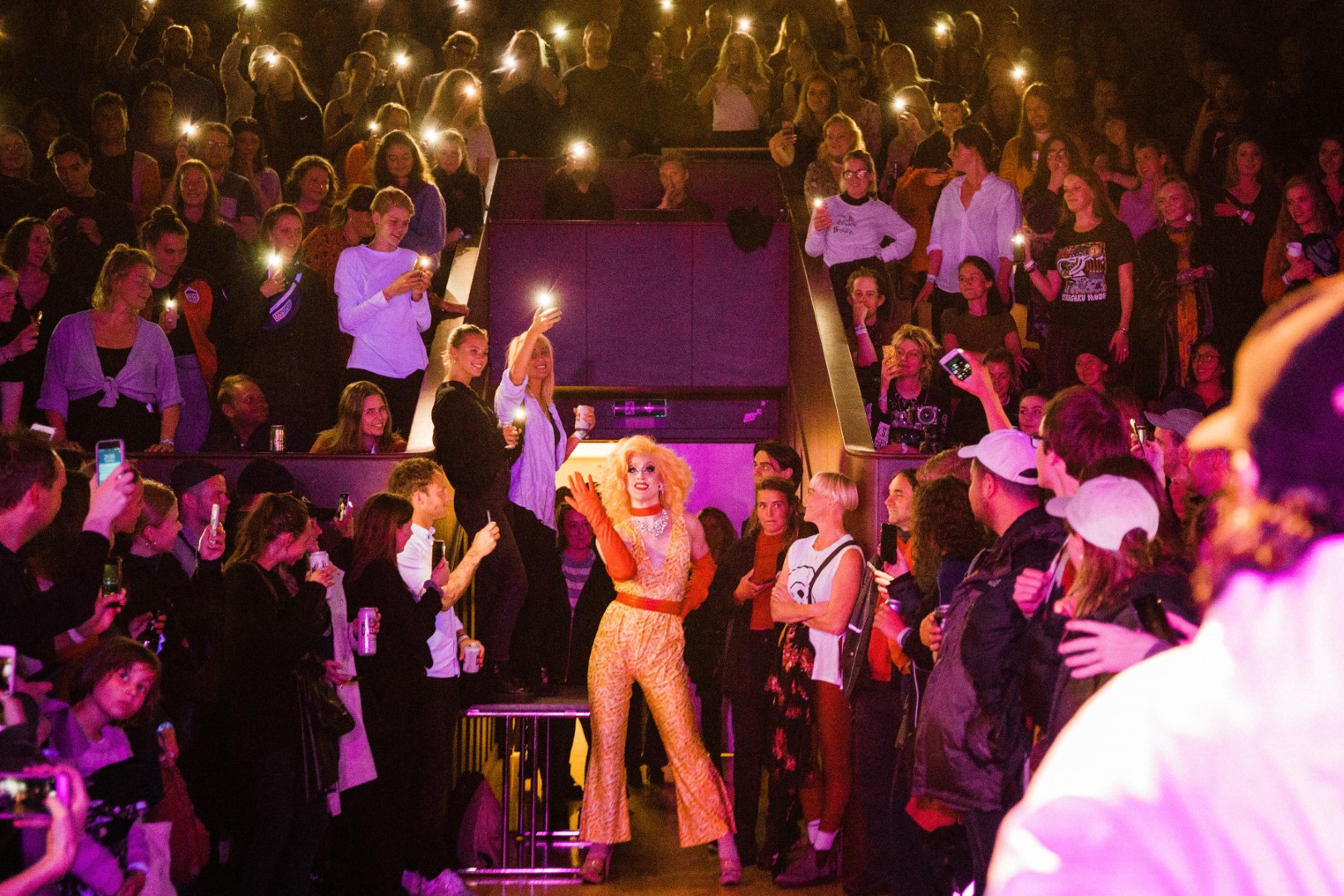
Both internationally and locally she’s worked with numerous queens from Drag Race and Dragula, as well as other drag superstars like Lady Bunny, Sherry Vine, Jacky Beat, the Boulet brothers, Peaches Christ and Heklina.
“For those that don’t know Heklina, she was a half-Icelandic drag legend that made waves in San Francisco in the 90s, co-founded and produced the longest running drag show series in SF, an icon and legend of international drag, who sadly passed away in 2023,” Gógó explains. “She can still be heard now and again, cacking at the filthiest jokes imaginable.
She booked me for her show every time I came to San Fransisco, as I did her whenever she came to Iceland. My favorite collaboration with Heklina was when she and Peaches Christ brought their show ‘Mommie Queerest’ to Reykjavík, and had me, Faye Knús and Páll Óskar as guest performers. The show was something to behold, as we did a high camp version of Mommie Dearest, with one day of rehearsals – it was spectacular and so, so fun. I’d love to do something similar again someday.”
Last year, Gógó performed in Japan for the first time. When asked why Japan specifically, she asks who not and tells us that she loves Japan!
“I’ve been obsessed since my early teens when I got introduced to the video games Kingdom Hearts and Final Fantasy, and anime like Naruto and One Piece. Yes, I’m a weeb. But those were my gateway into the colorful world of Japanese culture and language – and I’ve been hooked ever since.
So it was quite the experience being able to bring a Gógó Starr performance to a lovely little bar show in Tokyo. I reached out to an international burlesque performer called Erochica Bamboo, who helped me get in touch with a local show producer and got me a gig in a holiday drag show. The atmosphere was electric, but I was pretty shocked when I was asked if I could bring my music on a CD – not via email, USB or something – a CD! Like ye olden times. But turns out that bar only DJs with CDs – it’s their thing apparently, playing with a nostalgic 90s vibe.
I performed my infamous shark act, and during it there was a slight mixup with the music cues, so imagine me on stage, trying my best to communicate with the non-English speaking DJ on the side of the stage as I’m wiggling out of my shark costume. I did my best in my limited Japanese and it became a hilarious slapstick performance, and as far as I could tell – the audience loved it.
Bringing the joy of drag to new audiences is one of my favorite things to do – it is such a high.”
There is a serious undercurrent of hate in Iceland, and we don’t need to look far to see where it can lead.
Recently Gógó performed in the United States, where a new president won the elections. Would she feel secure performing over there in light of the results?
“It’s a horrible situation in the US now, as the rights of women, queer- and marginalized people have diminished over the past few years – taking dangerous steps backwards in history in service of the capital owning class, and will only get worse in the next few years.
I certainly feel less safe performing in the States now.”
She recalls that when she was performing in New York last September she was advised to not take the subway in drag after 9pm for fear of physical violence and hate crimes. So she usually spent a good chunk of her showpay on getting a car home from the gig, just to feel safer. “That was a bit scary”, she admits, and quite different from the atmosphere at home.
“There is growing homophobia across the world and we’re seeing entire media networks that are blatantly homophobic, and especially transphobic, that are fanning the flames of anger, hate and fear, that will undoubtedly lead to increased discrimination, hate crimes and violence towards queer people.
Sometimes it doesn’t really hit me until I hear the hateful comments in Icelandic – which is mostly happening on social media. I feel that generally people don’t say much of the homophobic comments in Icelandic aloud, they write them in silence behind anonymous profiles – cutting down rainbow flags at night, defiling queer murals and the like. There is a serious undercurrent of hate in Iceland, and we don’t need to look far to see where it can lead.
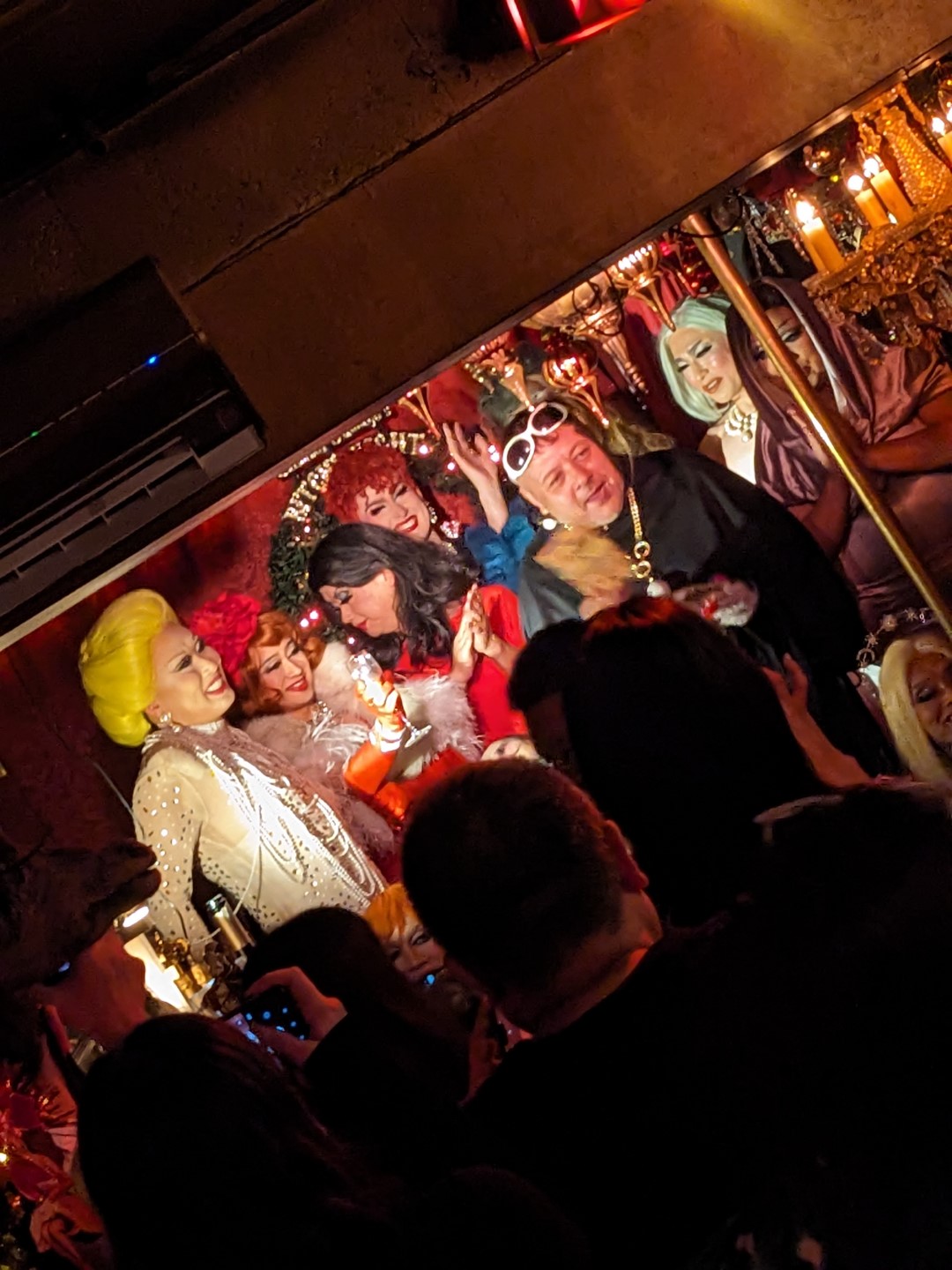
But that’s also why it’s so important to be visibly queer and unapologetic, especially if you have the energy, space, power and privilege to do so – inspiring others to feel the same in their everyday lives and making sure that everybody knows that we’re here, we’re queer, and we won’t be going anywhere.”
GayIceland: Given Donald Trump’s track record of implementing policies that restrict the rights and freedoms of the LGBTQ+ community, what steps do you think our community can take to actively resist and counter such political figures and their influence?
“I think among the many things we can do is of course to vote for parties and candidates that align with our values in the upcoming elections and make our voices heard.
We don’t need to look very deep to see figures in local politics picking up the populist and fascist rhetoric that has been working for Donald Trump and other right-wingers that are amassing power across the western world. To name a few, Sigmundur Davíð, the leader of Miðflokkurinn has been very openly hateful towards queer and trans people, as well as Eldur of Lýðræðisflokkurinn who founded the Icelandic section of the trans-exclusionary LGB group, now called Samtökin ‘22, that have been loudly advocating against trans rights in recent years.
Sigmundur Davíð, the leader of Miðflokkurinn has been very openly hateful towards queer and trans people, as well as Eldur of Lýðræðisflokkurinn who founded the Icelandic section of the trans-exclusionary LGB group, now called Samtökin ‘22.
Personally, I cannot fathom why any queer person or ally would vote for parties that stand against queer rights in any way, shape or form. Furthermore, I could never support the parties who are willing to form a coalition government with these hateful parties, or any party that hasn’t been openly supporting Palestine.
I will be voting for the Socialist Party, for many good reasons including my husband running for them along with many other amazing people. Totes biased – but seriously, I find them to be the best option that best aligns with my values.”
Our talk goes back to the art and drag-scene and Gógó’s currents projects. These days Gógó is quite busy flexing her drag and burlesque muscles, co-producing and often hosting the amazing Kjallarakabarett, a weekly cabaret show every Friday night in the National Theater basement, with Margrét Erla Maack – the undisputed first lady of Icelandic burlesque.
“We’re doing weekly shows from November through February for the third year in a row, where we celebrate and uplift a variety of different fringe artists on the scene as well as highlight some talented international friends. It’s a different show every time, it’s great fun and I do recommend it.”
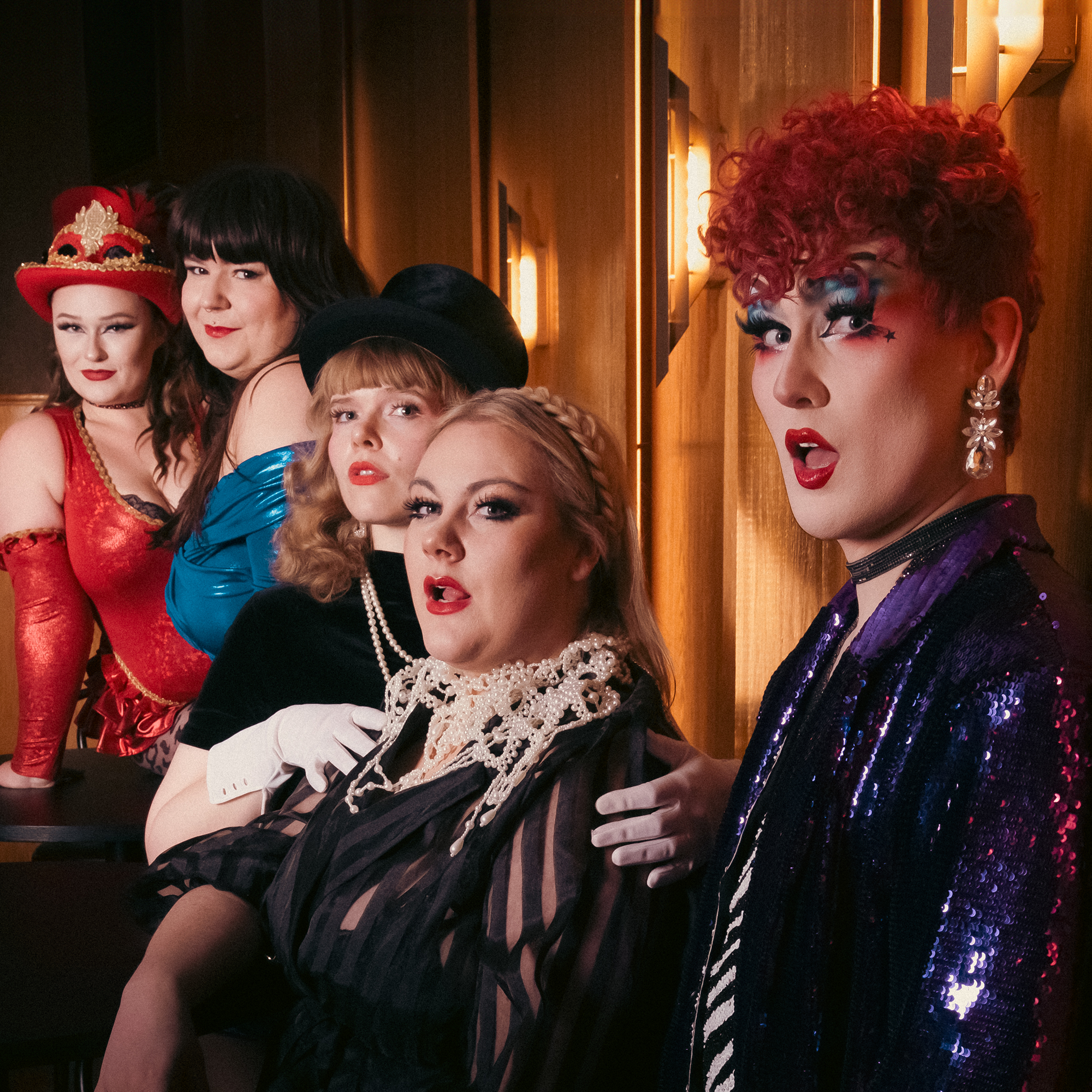
Asked if the show is put on purely for entertainment, or if is there a deeper message behind it, Gógó says the reason why she started and still does drag is for entertainment, hers and the audience’s.
“Drag is just so fierce, fun and fabulous and freeing. But drag is also an inherently political act, challenging the status quo and giving the middle finger to gender roles, the gender binary and is probably the most visual spectacle of queerness in mainstream society. That is what I like to see in drag; people casually changing the world by being themselves. I think it’s really powerful.”
Another aspect of what she does is the community building work of creating a scene and helping it flourish.
“I feel like I had to create the space for drag to flourish in Reykjavík, as it simply did not exist back when I moved here in 2014. Producing regular drag events to host and uplift queer and alternative talent has been such a joy – and I hope this scene we’ve built will continue to thrive and grow. It is through this work, that started as play, that we have built up the drag scene as we know it today.”
Gógó says that she is simply very proud to be a drag queen, burlesque performer, nightlife entertainer and producer.
“When I perform, I want to shine as my queer, confident self – spread joy and positivity through my work, uplift others as I go along – and hopefully inspire others to do the same. We’re all in this together and every one of us deserves to live our lives to the fullest, and I hope to help others be their beautiful authentic selves by being MY gorgeous shining self on stage. Just like Páll Óskar is and has been a beacon of hope and inspiration in the Icelandic queer community, I too hope to have that effect and impact on the next generations of queerdos. At the same time, I’m just trying to have fun, look good and feel gorgeous.”
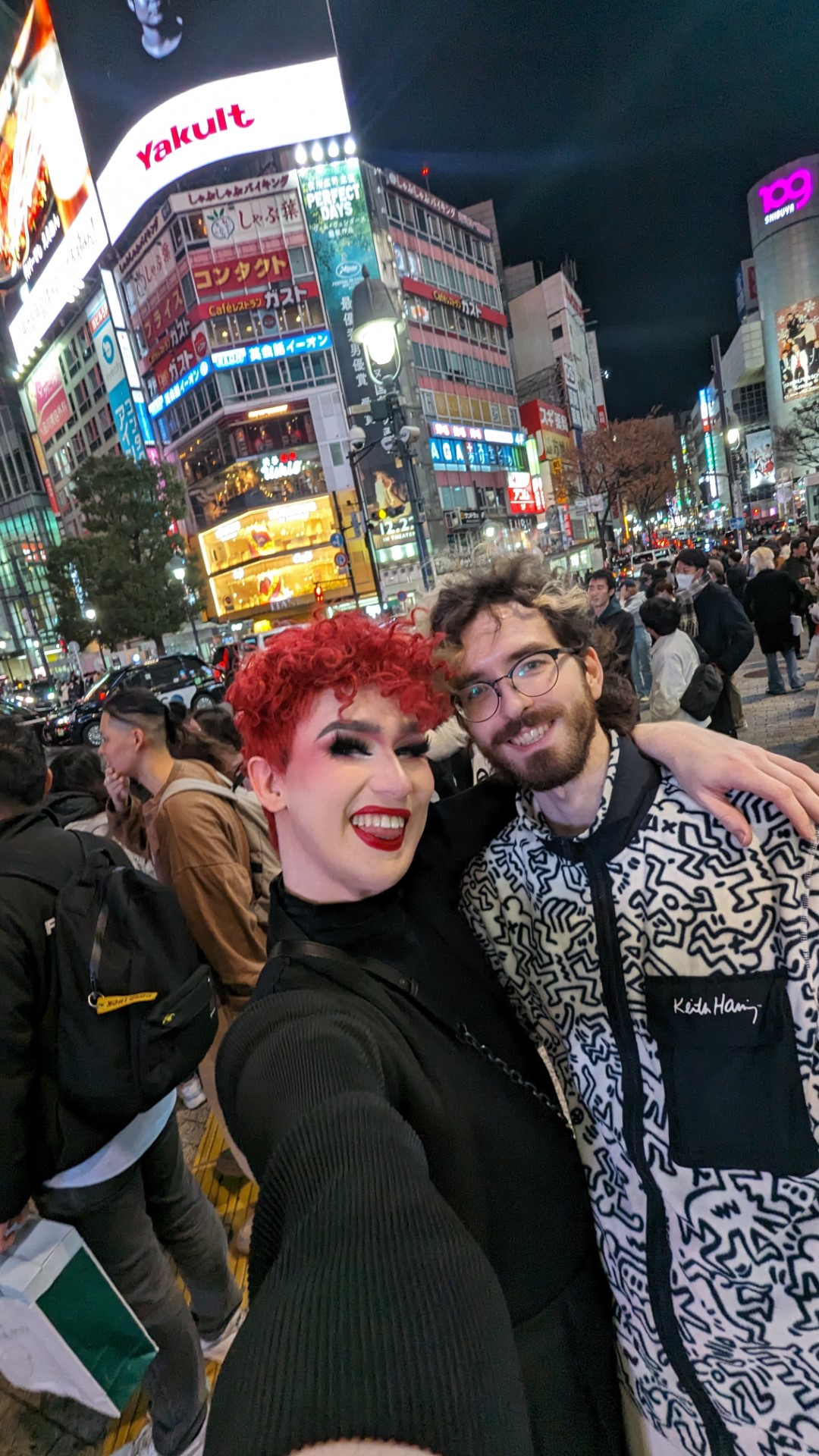
Asked what her future plans are she says that she has plans for a Starr family and friends show in 2025, where she is going to recruit some of her drag children and friends to do a classic themed drag show like they used to do, but taken to another level.
“I do miss more themed shows in my life, and producing specific show ideas and making them a reality. And clearly the people want more, so who am I to say no.”
Gógó is also teaching drag makeup at the Reykjavík Makeup School. “There have been some requests recently for some drag and showgirl makeup workshops – so if the people are asking, I don’t see why not. Aside from that, I’m entertaining at some corporate events, and would love to fill my calendar up with some more of those. So if you’re planning a holiday get-together, a company celebration, a bachelorette party or something where a fiercely seasoned drag entertainer would take it to the next level – hit a girl up. I’ll be waiting.
To anyone who has dreams of drag performing – I say just do it! What are you waiting for?
And as always I’d love to be a part of the Drag Race franchise, often called the Olympics of Drag, and I have this gut feeling that I can make it if I truly put my mind to it. That’s what we need, right? Delusion!”
Talking about plans, me and my husband, Bjarni, have also been aiming to do some sort of a celebration of our relationship, as we never had an official ceremony or party. So why not make it a spectacle – a show.”
Gógó uses the opportunity to give a special shoutout and sincere thanks to Bjarni, for supporting her through this entire journey, especially financially, giving her the gift of financial freedom to pursue her art and passion, as well as supporting her emotionally and professionally during all of it.
“He’s the best, and I couldn’t have asked for a more supportive partner – and he deserves much more credit than he receives for not only helping me and my career, but the role he’s played in producing, assisting, nurturing and uplifting the local drag scene as a whole,” she says, which goes to show that you don’t have to be a drag performer to be a part of this scene, celebrate queerness and challenge the norms of society – you just have to be yourself.
GayIceland: Finally, any words for those who are dreaming about doing drag?
“To anyone who has dreams of drag performing – I say just do it! What are you waiting for?
Permission? You’ve got it! Encouragement? You’ve got it! To feel good enough? I’m telling you – you’ve got it!
The best way to start is simply to go perform. Go dress up in your drag and go to a show. Try stuff out – and the fastest way to grow and get comfortable is on the stage. Especially now that you have open stages like Art School and more that you can apply for. You won’t get good at anything without being a little bad at it first, so just go for it and remember to HAVE FUN!”
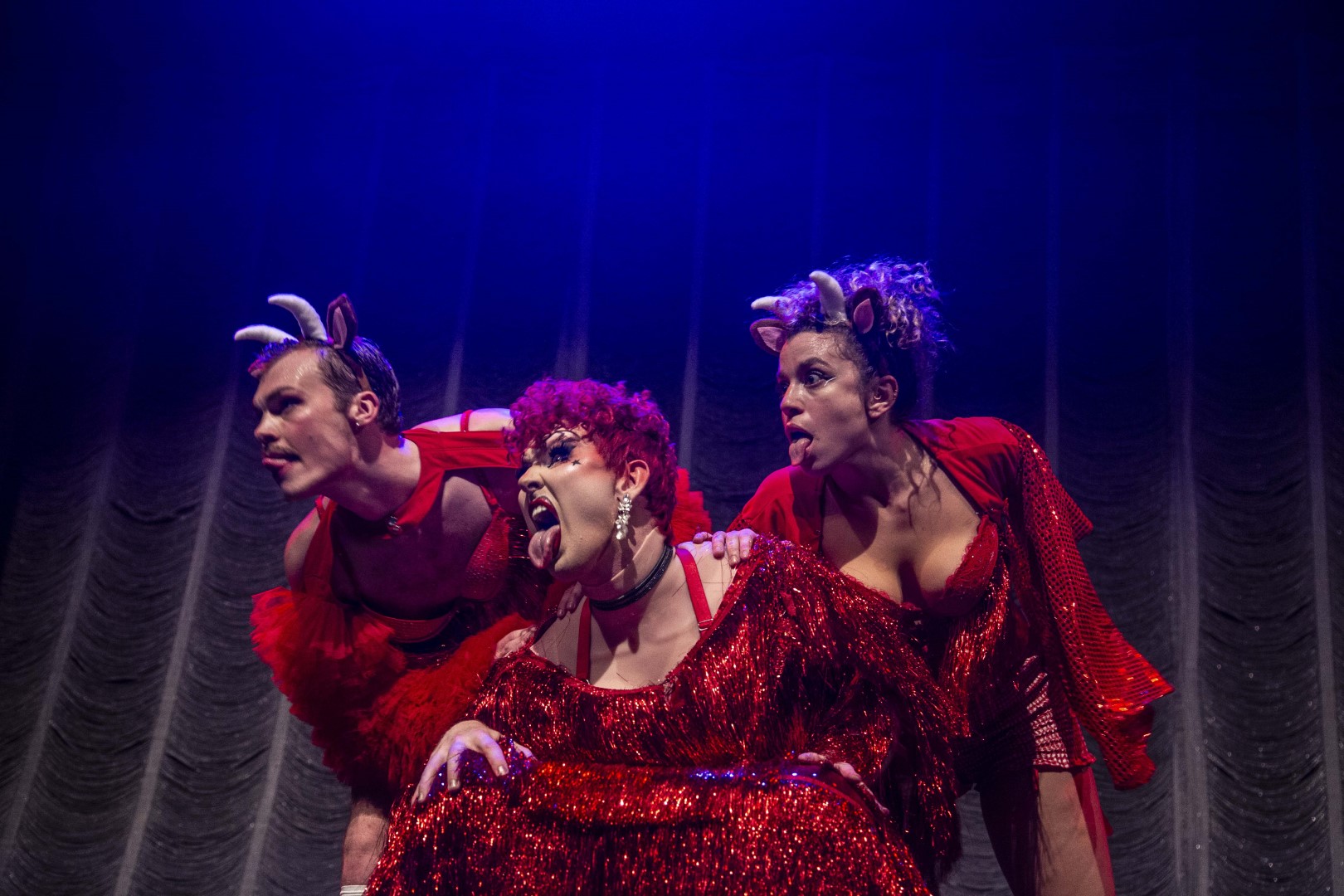
A short drag history lesson from Gógó: |
|
|
|
|
|
|

